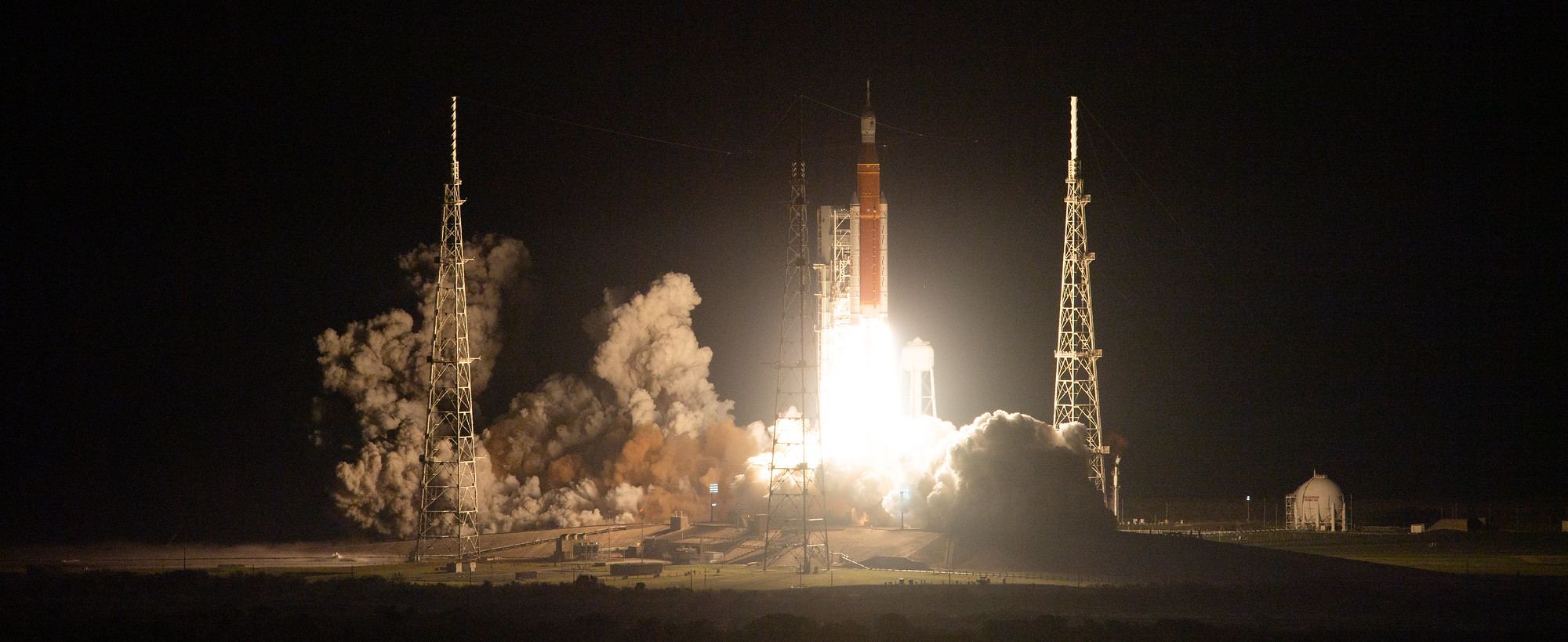It really, finally, actually happened. The long-waited Space Launch System (SLS) rocket carrying the Orion capsule launched successfully and is now on its way to the Moon. After years of delays — and then two scrubbed launch attempts and a rollback of the rocket to the Vehicle Assembly Building this fall — this is the first time in 50 years that a human capable spacecraft is going to the Moon. In a way, it is fitting that Artemis launched in the dark, as the last human-rated spacecraft that launched to the Moon – Apollo 17 – also had liftoff at night.
“It’s taken a lot to get here, but Orion is now on its way to the Moon,” said Jim Free, NASA deputy associate administrator for the Exploration Systems Development Mission Directorate. “This successful launch means NASA and our partners are on a path to explore farther in space than ever before for the benefit of humanity.”

Artemis I began its journey at 1:47 a.m. EST from Launch Pad 39B at the Kennedy Space Center in Florida. This is the first integrated flight test of NASA’s deep space exploration systems. While no astronauts are on board, NASA says this rocket its best hope for one day returning people to the surface of the Moon. Artemis I will not land on the Moon, but Orion is expected to fly by the Moon on Nov. 21, performing a close approach of the lunar surface (about 60 nautical miles away) on its way to a distant retrograde orbit, farther than any other human-rated spacecraft thousands of kilomters/miles beyond the Moon. It will return to Earth 25 days after launch, and splashdown of Orion is currently slated for December 11.
The lead-up to launch wasn’t without drama. In the final hours of the countdown, a hydrogen leak in a valve threatened to delay the launch. With the rocket nearly fully fueled, three engineers known as the Red Team were sent out to the launchpad and into the “blast danger area” to try to fix the problem. Incredibly, the team was able to torque and tighten hardware on the leaky valve. The countdown to launch was them able to proceed.
About and hour and a half into the flight, the rocket’s upper stage engine successfully fired for approximately 18 minutes to give Orion the push needed to send it out of Earth orbit and toward the Moon. Orion then separated from the upper stage and is now on its outbound coast to the Moon powered by its service module, which was provided by ESA (European Space Agency). ESA also built the solar panels that powers Orion’s electronics.
Orion’s service module will also perform a series of burns to keep Orion on course toward the Moon.
“The Space Launch System rocket delivered the power and performance to send Orion on its way to the Moon,” said Mike Sarafin, Artemis I mission manager. “With the accomplishment of the first major milestone of the mission, Orion will now embark on the next phase to test its systems and prepare for future missions with astronauts.”
At the time of this article being published, over 10 hours into the mission, Orion is over 100,000 km (62,000 miles) away from Earth, and about 322,000 km (200,000) miles away from the Moon. You can keep track of where Orion is at this interactive NASA webpage.
Cameras on the European Service Module’s solar arrays sent back this image of Earth from that distance:


